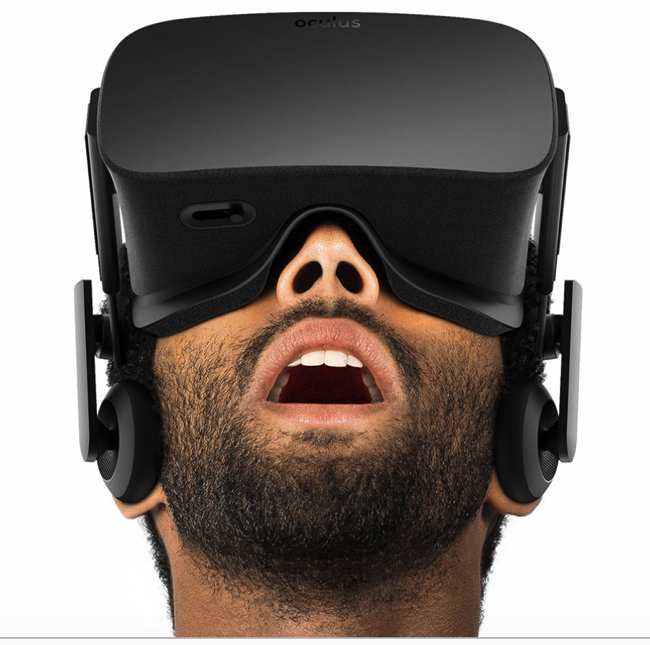Apparently this is the year of VR or virtual reality. The Oculus Rift can now actually be purchased by normal (non-developer) user. The Valve/HTC Vive is available as well, and Sony’s ‘Morpheus’ PlayStation VR product is supposedly coming very soon.
This isn’t a review of any of these products, but rather my opinion regarding the current state and potential of VR…
The current state of VR
It is still early days, folks- pretty much all of the current crop of VR devices are just starting to ship in 2016. But the phrase ‘current crop’ is worth considering- we’ve been down this road before.
I do believe, however, that this time will be different. VR is around to stay… but maybe not in quite the way we expect, or as widely as some might hope. Below are some of my observations. I’ve numbered them for easy reference.
- the technology is good enough: previous attempts at VR lacked enough resolution and fast enough processing to produce convincing VR for home use.
- We now have VR displays that can achieve eye-fooling frame rates and resolutions at a cost measurable in hundreds of dollars instead of tens of thousands
- there is a lot of money involved: Oculus, Vive, and Sony between them have invested hundreds of millions of dollars on VR.
- This is a huge step up from previous attempts, and at least Oculus seems to be in this for the long haul with Facebook’s billions and realistic plans for the next decade or so.
- nausea is still a problem
- a not-insignificant portion of people using VR get sick after a few minutes. And it is easy to create a game that increases this percentage significantly if the developer doesn’t follow careful VR game design practices (see item #4)
- the gaming experience is constrained / limited
- creating a believable / usable gaming experience in VR is quite different from creating non-VR games. And many of the most common types of games e.g.: first person shooters and RPGs would make a distressingly high percentage of users physically ill
- the design ‘best practice’ for VR involves placing the player in a virtual cockpit and/or otherwise preventing them from moving around in an unscripted fashion. This immediately identifies a large percentage of modern games and entire genres as ‘inappropriate’ for VR
- full motion VR isn’t really practical in the home: not many people can dedicate an entire ‘empty’ room to one type of gaming experience
- ‘full motion’ in this context means supporting something other than sitting in a chair- standing up, and taking a step or two in each direction. Because the user is effectively ‘blind’ and because of the sensors used, the room must be pretty much empty, and about the size of many small apartment living rooms
- Currently only the Vive supports full motion VR, but motion controllers are expected to come for the Oculus as options. And many reviewers claim that VR without full motion really isn’t that great
- VR is still ‘expensive’: it costs more than a console, in some cases much more
- the Oculus (without motion controls) is over $500; the Vive (with motion controls) is over $1000. Even the Playstation VR will be about $500
- although this is a tremendous amount less expensive than ‘comparable’ VR a decade ago, it is still very expensive for a peripheral that will only work for a few games under a few specific conditions.
- VR is anti-social in the extreme: you can neither see nor hear anyone outside the game, and in fact any such person ‘bothering’ you would likely ruin the experience
- You can’t VR with friends at a party, nor can you share the experience with someone watching over your shoulder. And full motion VR adds a whole new realm of issues in this vein
In summary- VR is not yet fully baked
VR is cool, and the current crop of devices are good enough for early adopters to try out. But I’m very skeptical about VR being any kind of mass-market success within the next one to five years. There won’t be enough games or experiences to justify growth to the same level as console purchases, let alone smartphone levels of ubiquity.
I expect there will be one or two million early adopters with VR rigs by 2017, and something like ten million or so by 2020. The technology will be significantly different by then, and perhaps augmented or mixed reality will become dominant. I might even be one of the early adopters in a year or two if the right games or experiences on the right hardware come along.
I’m really curious to see what Magic Leap can deliver in a few years time, for example. AR or mixed reality would significantly change the game: if you can still see the world around you, with a truly ‘eye fooling’ virtual reality layered on top, many of the issues with VR may disappear.

